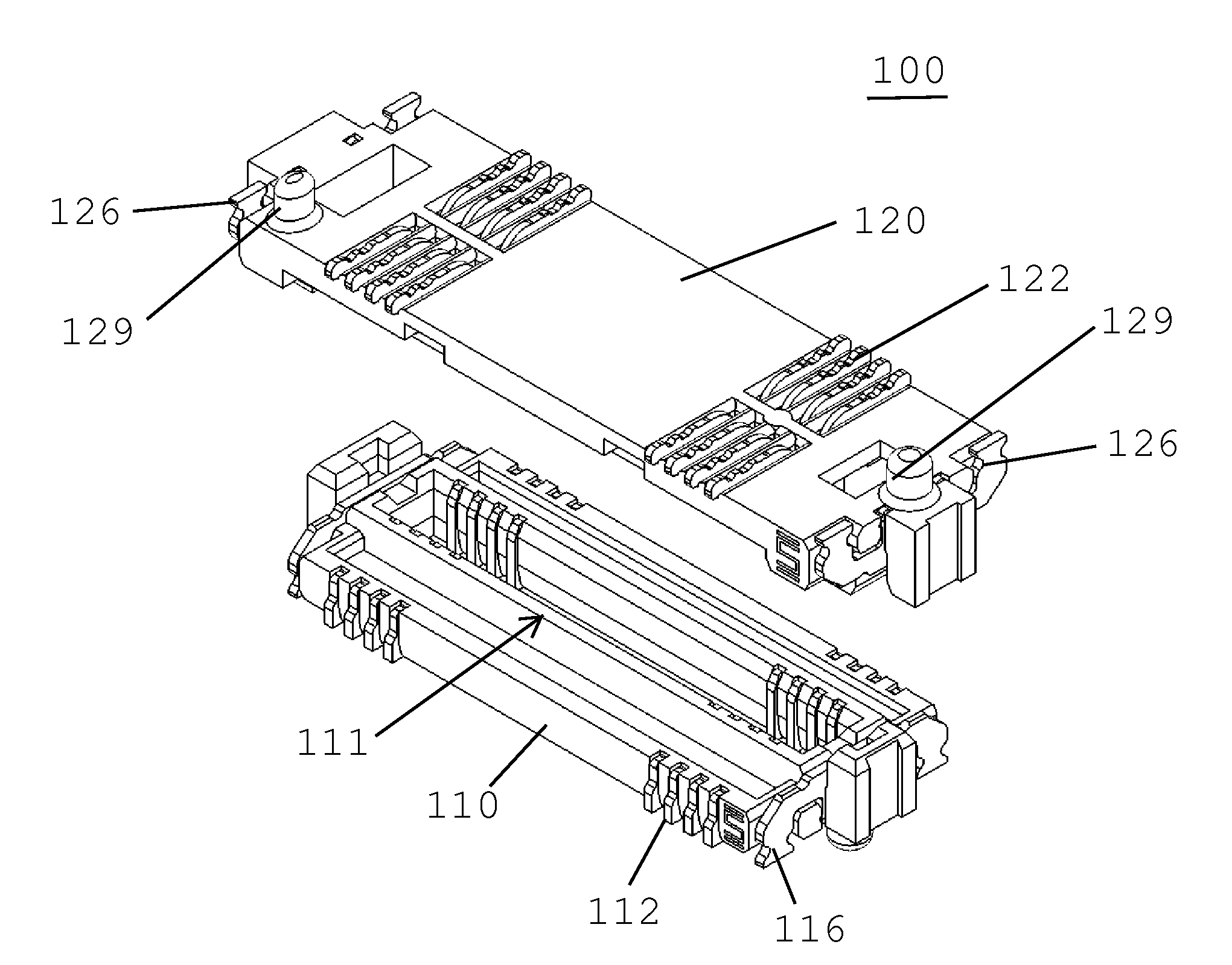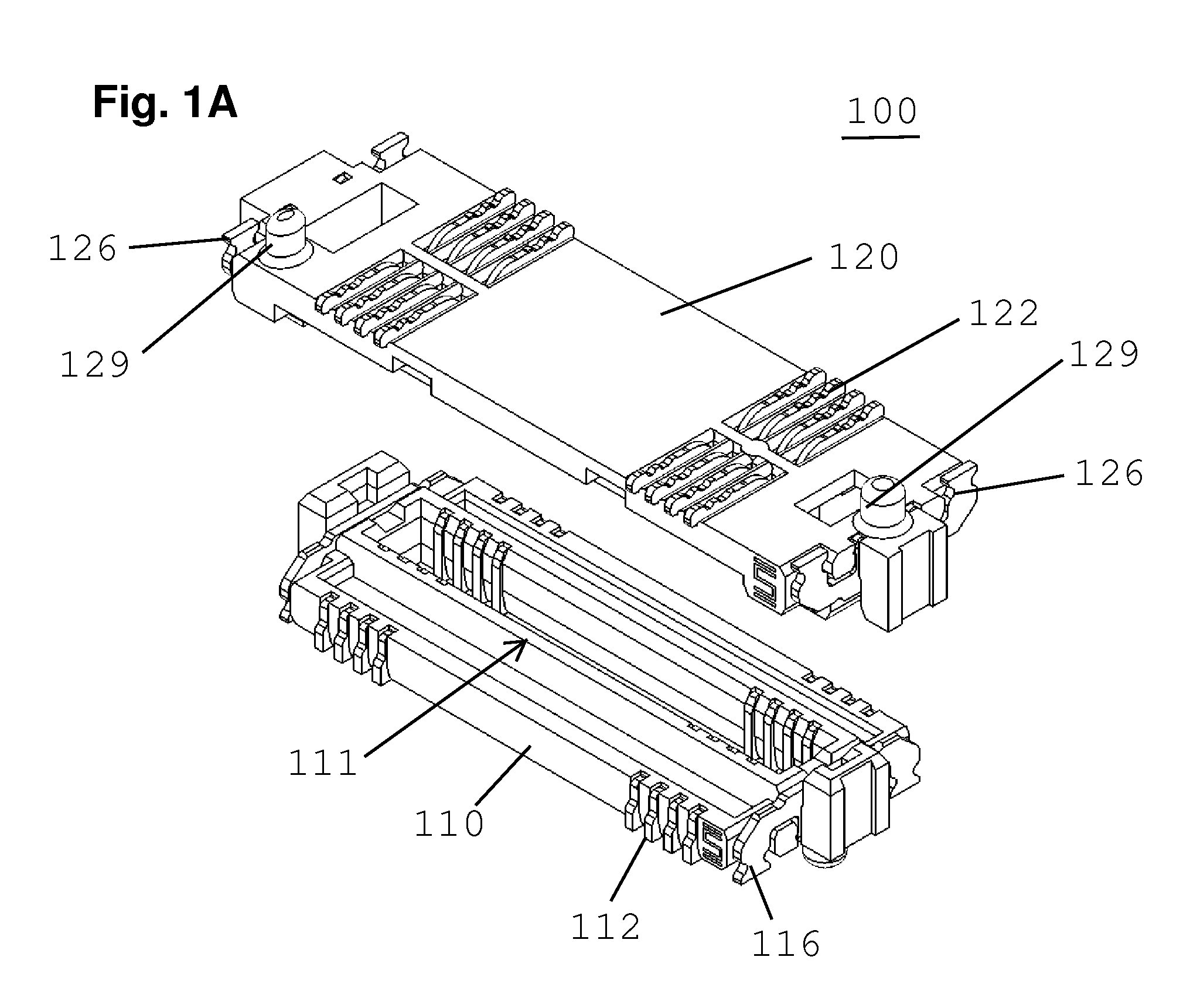Low-profile mezzanine connector
a mezzanine connector, low-profile technology, applied in the direction of electrical apparatus, coupling device connection, printed circuit, etc., can solve increasing the difficulty in maintaining the desired co-planarity, and exacerbate the problem of increasing the input/output density requirements, etc. problem, to achieve the effect of long contact wipe distan
- Summary
- Abstract
- Description
- Claims
- Application Information
AI Technical Summary
Benefits of technology
Problems solved by technology
Method used
Image
Examples
Embodiment Construction
[0043]Preferred embodiments of the present invention will now be described in detail with reference to FIGS. 1A to 9. Note that the following description is in all aspects illustrative and not restrictive, and should not be construed to restrict the applications or uses of the present invention in any manner.
[0044]FIGS. 1A to 4B show a mezzanine connector 100 according to a preferred embodiment of the present invention.
[0045]FIGS. 1A and 1B are perspective views of the mezzanine connector 100 according to a preferred embodiment of the present invention. FIGS. 2A and 2B are perspective views of the mezzanine connector 100 of FIGS. 1A and 1B connecting a first substrate 130 to a second substrate 140. FIG. 3A is a cross-sectional end view of the mezzanine connector 100 of FIGS. 1A and 1B. FIG. 3B is a cross-sectional end view of the mezzanine connector 100 connecting the first substrate 130 and the second substrate 140. FIG. 4A is a cross-sectional perspective view of the mezzanine con...
PUM
 Login to View More
Login to View More Abstract
Description
Claims
Application Information
 Login to View More
Login to View More - R&D
- Intellectual Property
- Life Sciences
- Materials
- Tech Scout
- Unparalleled Data Quality
- Higher Quality Content
- 60% Fewer Hallucinations
Browse by: Latest US Patents, China's latest patents, Technical Efficacy Thesaurus, Application Domain, Technology Topic, Popular Technical Reports.
© 2025 PatSnap. All rights reserved.Legal|Privacy policy|Modern Slavery Act Transparency Statement|Sitemap|About US| Contact US: help@patsnap.com



